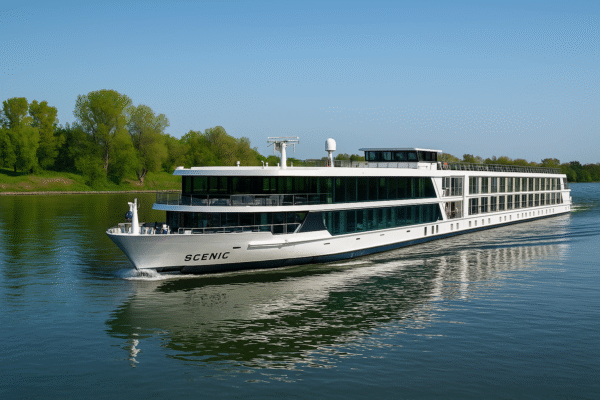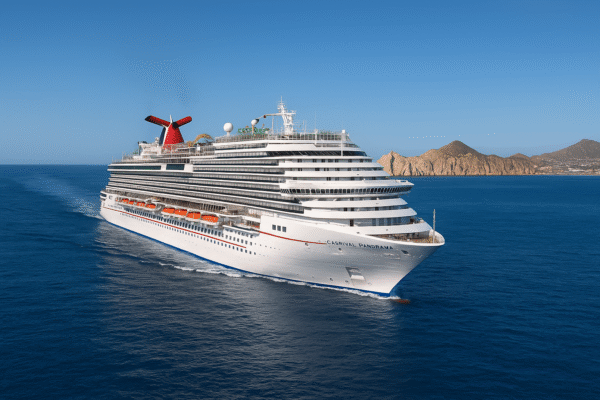Barcelona is taking decisive action to combat overtourism and reduce environmental pressure from cruise ships by cutting the number of cruise terminals from seven to five by 2030. Under a landmark agreement between the Port of Barcelona and the City Council, Terminals A and B at the World Trade Center have already been permanently closed, while Terminal C will be demolished and completely rebuilt as a more sustainable facility. The strategy reflects the city’s broader commitment to managing tourism more responsibly, enhancing urban livability, and aligning with Spain’s long-term environmental goals.
Cruise Terminal Reform Timeline and Infrastructure Investments
Construction of the new Terminal C is scheduled to begin in late 2026 and conclude by 2030. Designed to absorb the same passenger volume as the former A, B, and C terminals combined, the modernized facility will prioritize environmental performance and user-friendly design.
As part of the overall port redevelopment, the Olympic Port area will undergo a €185 million transformation. The Port of Barcelona has earmarked €50 million for rebuilding the dismantled terminal area and €90 million to expand the Porta d’Europa bridge—ensuring safer, greener access for pedestrians and cyclists. This move supports the city’s broader objective to transition toward low-emission and sustainable mobility.
A critical component of the plan includes electrifying the new terminal, allowing cruise ships to connect to shore power and turn off diesel engines while docked—reducing noise and harmful emissions significantly.
Cruise Passenger Cap Introduced to Manage Urban Congestion
One of the most transformative elements of the new port strategy is a daily cap on cruise passenger arrivals. Current cruise capacity at the port sits at 37,000 passengers per day. Under the new scheme, this will drop to 31,000, limiting tourist congestion—particularly in sensitive historic districts like the Gothic Quarter and Las Ramblas.
By easing the volume of cruise visitors during peak hours, Barcelona aims to rebalance the local tourism experience and preserve quality of life for residents—many of whom have expressed concerns about overcrowding and urban strain.
Alignment with Barcelona’s Urban and Environmental Agenda
The City Council emphasized that these changes are part of a holistic tourism and environmental strategy. Alongside terminal reductions, Barcelona has already passed legislation to phase out short-term tourist rentals entirely by 2028. Other actions include stricter licensing for tour groups, higher tourist taxes for short visits, and expanded investment in smart crowd-control systems in popular areas.
These measures fall under Barcelona’s Sustainable Tourism Strategy 2024–2030, which seeks to protect cultural heritage, improve the tourism-resident balance, and boost sustainability in transportation, housing, and public services.
Cruise Tourism: Key Figures and the Challenge Ahead
In 2024, over 3.6 million cruise passengers arrived in Barcelona, maintaining its status as one of Europe’s busiest cruise ports. According to the Port of Barcelona, the first five months of 2025 saw cruise calls rise by 21% and passenger arrivals increase by 20% year-on-year. While the industry remains economically vital, city leaders are now prioritizing long-term sustainability over unchecked growth.
With the revised terminal structure and new disembarkation guidelines, port officials plan to spread cruise ship arrivals more evenly across the week. This change aims to ease pressure on city infrastructure while ensuring the tourism economy remains active but controlled.
Enhancing Mobility and Cruise Passenger Experience
The new Terminal C will feature upgraded amenities, streamlined boarding and disembarkation processes, and improved integration with city transport services. A new digital passenger management system and real-time information displays will be installed to help coordinate cruise-related mobility and ensure minimal disruption to daily city operations.
Meanwhile, the €90 million expansion of the Porta d’Europa bridge will improve accessibility for foot and bike traffic, connecting the cruise terminals more efficiently with urban hubs and reducing reliance on polluting shuttles or private cars.
Cruise Industry Adaptation and Ongoing Oversight
Cruise operators are expected to adjust itineraries and docking schedules in response to the terminal reduction. The Port of Barcelona will actively monitor compliance with the new passenger cap and operational guidelines, using live data to assess impacts and make adjustments as needed.
While the infrastructure investment is significant, city planners view the strategy as essential to protecting Barcelona’s long-term cultural and environmental future. Cruise lines have been invited to collaborate on solutions that align with the city’s sustainability objectives while maintaining Barcelona’s appeal as a global cruise destination.
Broader National and Regional Implications
Barcelona’s approach reflects growing sentiment across Europe, where several ports—including Venice, Dubrovnik, and Amsterdam—have already restricted cruise access due to overtourism. In Spain, the Ministry of Transport, Mobility and Urban Agenda has emphasized the importance of balancing tourism growth with environmental responsibility.
Barcelona’s reforms also align with Spain’s national recovery and resilience plan (PRTR), supported by EU NextGeneration funding, which encourages sustainable infrastructure and green energy use in tourism hotspots.
Looking Ahead: A Sustainable Vision for Cruise Tourism
The full impact of Barcelona’s cruise terminal reforms will be assessed post-2030. Officials stress that the plan is adaptable, with room for further regulation depending on passenger volume, local feedback, and environmental data.
As Barcelona pushes forward with its sustainability-first tourism model, the city is poised to become a global leader in responsible port management. With fewer terminals, cleaner ships, and smarter infrastructure, the future of cruise tourism in Barcelona may serve as a benchmark for other overtouristed destinations worldwide.
For more travel news like this, keep reading Global Travel Wire






















